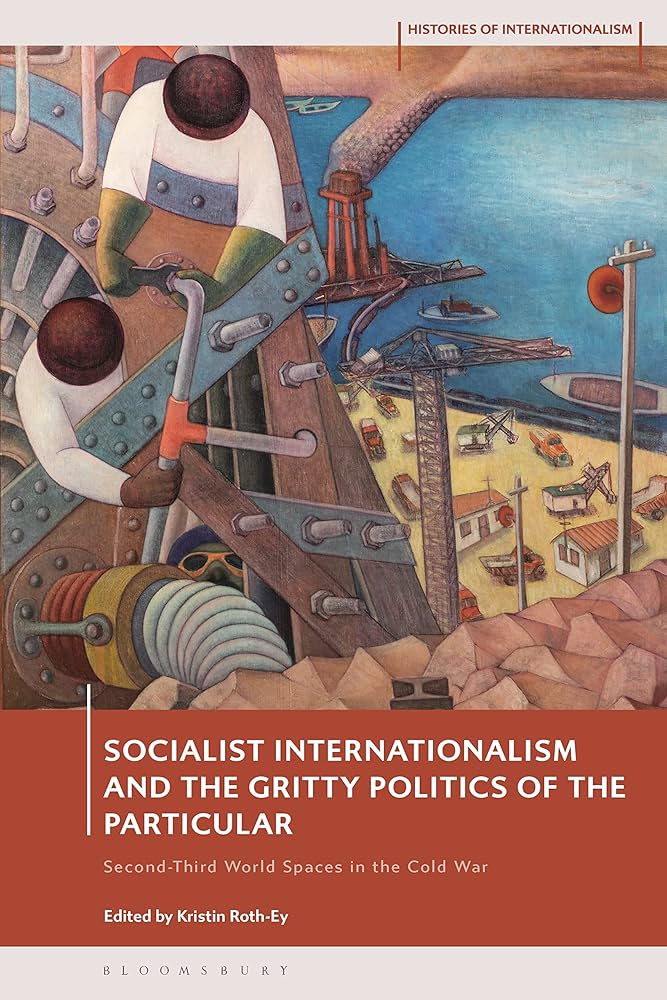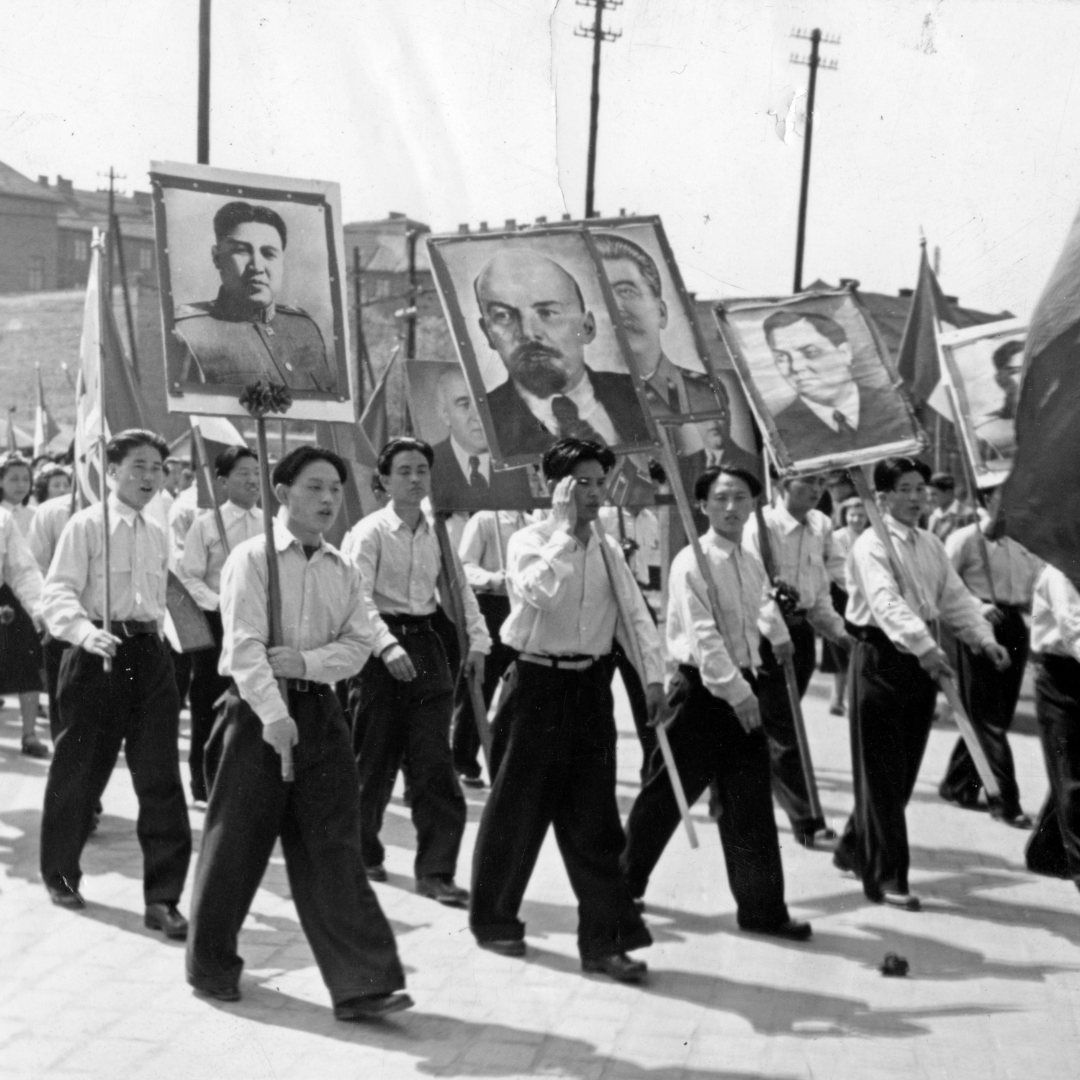Spaces of interaction in the Second-Third World

Published by: Bloomsbury Academic

The volume Socialist Internationalism and the Gritty Politics of the Particular, edited by historian Kristin Roth-Ey, offers a series of contributions dealing with diverse episodes and stories about contact and exchange taking place between the socialist Second World and the Third World throughout the years of the Cold War. The topic in itself is not particularly innovative. Historians of the Cold War have made significant efforts to decenter traditional narratives for more than a decade now, significantly extending their attention to developments in the global South. The scholarship dealing with Eastern Europe has followed suit, with numerous studies published in the last few years about the many political, economic, cultural and intellectual connections of Eastern European socialism with processes and actors in Africa, Asia, and Latin America. Yet, in this rich landscape of works about the global reach of Eastern European socialism, the compilation edited by Roth-Ey truly stands out for its quality and originality. It does so not only because it contains contributions by some of the most talented authors in the field, but also and most importantly because the chapters are brilliantly articulated in a larger reflection with multiple themes that cut across all contributions, leading to conceptual and theoretical synergy.
Roth-Ey’s decision to analyze these spaces in a thematic and structured manner shows a dose of theoretical ambition that is rather rare, and very refreshing.
The book offers twelve chapters dealing with instances of cooperation, aid, and exchange taking place between the Second and the Third World in such diverse fields as military training, public health, education, and global communication. The editor and the authors have done outstanding work by providing a systematic reflection on these diverse instances of exchange through the angle of space. Each chapter provides a vantage point onto one specific space of interaction between actors, practices, and discourses coming from the Second World with their homologues in the Third World: the hospital, the school, the training camp, the exhibition, the university, and also other, rather immaterial spaces such as the epistolarium, are presented as singular and specific sites for transnational contact and exchange, with their own particular characteristics. In a field in which many authors often content themselves with simply unveiling episodes of transnational contact between Eastern Europeans and individuals from the global South without adding much reflection as to the meaning and importance of such encounters (which frequently has the effect that these stories remain barely more than anecdotes), Roth-Ey’s decision to analyze these spaces in a thematic and structured manner shows a dose of theoretical ambition that is rather rare, and very refreshing.
The recurrence of certain themes throughout the volume suggests that the editor and the authors made considerable efforts to develop what can be seen as a true collective reflection on socialist internationalism and its contradictions. When discussing such diverse cases as the deployment of Czechoslovak military advisors in Egypt, the delivery of Romanian medical services to Libya, the role of Polish economists in Ghanaian higher education or East German training programs for East African trade-union officials, the authors show that exchanges between the Second and the Third World displayed certain common patterns. Genuine feelings of internationalist camaraderie and a solid faith in the promises of socialist modernization went hand in hand with asymmetries of power, remnants of colonial mindsets that transpired in the practices and discourses of Eastern Europeans vis-à-vis their comrades in the Third World, economic interests that often prevailed over abstract solidarities, and also persistent forms of gender inequality. These included a moralizing tendency to watch over the sexual conduct of Eastern European representatives in the global South for the sake of protecting the image of the socialist motherland and its family values. Thus, the volume shows that these transnational relations navigated between camaraderie and conflict, between solidarity and need, between respect and exploitation, and also between universalism and diverse forms of cultural racism. The contradictory nature of Eastern Europeans’ approach to the Third World is well exemplified in the last chapter of the book, which focuses on the travelogue as a site and an instrument of political imagination, and which eloquently states that Eastern Europeans leveraged their lack of a colonial record to “recover the travelogue from its imperial associations, while continuing to exploit its aesthetics to sell a dream of global power” (p. 258).
the volume is an outstanding contribution to the literature on global socialism, revisiting topics and questions that have for the most part been treated before, but doing it with proficiency and from an angle that is both refreshing and inspiring.
For all its virtues, one of the deficiencies of the volume is the general tendency among the contributors to rely almost exclusively on Eastern European sources, which inevitably produces biases in their narratives and interpretations. The contributors, however, are in most cases aware of such deficits, and strive to present their analyses as consciously incomplete. Their interpretation of sources makes up to a certain extent for the limitations of the corpora, as the authors tend to read the archive against the grain and repeatedly show how the voices of Third World actors make their way up to the surface. This is perhaps one of the main contributions of the volume: showing that all of these spaces of interaction and transnational contact were co-produced, and that even though Eastern Europeans often saw their comrades from the Third World as blank slates on which they could somehow imprint the outlines of socialist modernity, Latin Americans, Africans, and Asians were endowed with agency, experiences and skills that made them resist, respond, and negotiate instead of simply follow and comply with the imperatives of Czechoslovak, Soviet, and Romanian socialist officials.
All in all, the volume is an outstanding contribution to the literature on global socialism, revisiting topics and questions that have for the most part been treated before, but doing it with proficiency and from an angle that is both refreshing and inspiring. Scholarship on relations between the Second and Third World has developed impressively in the last decade, and it is more difficult than ever to make a valuable and original contribution to the field. Socialist Internationalism and the Gritty Politics of the Particular, however, succeeds in doing so.
Agustín Cosovschi is a postdoctoral researcher at the École française d’Athènes. His research deals with the political and intellectual history of the global Cold War, with a focus on Southeast Europe. He is also a research associate at the Centre d’Études Turques, Ottomanes, Balkaniques et Centrasiatiques in Paris.
